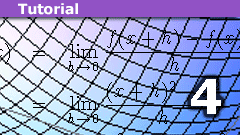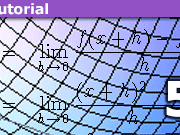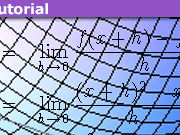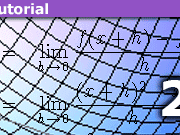The Pantheon of Derivatives – Part IV
Click for complete series
Table of Contents
Lie Derivatives
A Lie derivative is in general the differentiation of a tensor field along a vector field. This allows several applications since a tensor field includes a variety of instances, e.g. vectors, functions, or differential forms. In the case of vector fields, we additionally get a Lie algebra structure. This is, although formulated in a modern language, the actual reason why Lie algebras have been considered in the first place: as the tangent bundle of Lie groups which are themselves the invariants that appear as symmetry groups in the standard model of particle physics or more generally in the famous theorem of Emmy Noether, which is actually a theorem about invariants of differential equations (see [9],[10]). The Jacobi identity, e.g., which together with anti-commutativity defines a Lie algebra is simply a manifestation of the Leibniz rule of differentiation.
A – Definitions
“Let ##X## be a vector field on a manifold ##M##. We are often interested in how certain geometric objects on ##M##, such as functions, differential forms and other vector fields, vary under the flow ##\exp(\varepsilon X)## induced by ##X##. The Lie derivative of such an object will in effect tell us its infinitesimal change when acted on by the flow. … More generally, let ##\sigma## be a differential form or vector field defined over ##M##. Given a point ##p\in M##, after ‘time’ ##\varepsilon## it has moved to
##\exp(\varepsilon X)## with its original value at ##p##. However, ##\left. \sigma \right|_{\exp(\varepsilon X)p}## and ##\left. \sigma \right|_p ##, as they stand are, strictly speaking, incomparable as they belong to different vector spaces, e.g. ##\left. TM \right|_{\exp(\varepsilon X)p}## and ##\left. TM \right|_p## in the case of a vector field. To effect any comparison, we need to ‘transport’ ##\left. \sigma \right|_{\exp(\varepsilon X)p}## back to ##p## in some natural way, and then make our comparison. For vector fields, this natural transport is the inverse differential
\begin{equation}\label{LD-I}
\Phi^*_\varepsilon \equiv d \exp(-\varepsilon X) : \left. TM \right|_{\exp(\varepsilon X)p} \rightarrow \left. TM \right|_p
\end{equation}
whereas for differential forms we use the pullback map
\begin{equation}\label{LD-II}
\Phi^*_\varepsilon \equiv \exp(\varepsilon X)^* : \wedge^k \left. T^*M \right|_{\exp(\varepsilon X)p} \rightarrow \wedge^k \left. T^*M \right|_p
\end{equation}
This allows us to make the general definition of a Lie derivative.” [5]
The exponential function comes into play here, because [5] is about the theory of Lie Groups ##G##, and the exponential map is the natural function that transports objects in the tangent bundle of a Lie group ##G## to those on the manifold ##G##, a form of integration if you like. It is the same reason as we often use an Ansatz with the exponential function to solve differential equations, which are also statements on tangent bundles.
Definition [5]: The Lie derivative along a vector field ##X## of a vector field or differential form ##\omega## at a point ##p \in M## is given by
\begin{equation}\label{LD-III}\begin{aligned}
\mathcal{L}_X(\omega)_p &= X(\omega)|_p \\ &= \lim_{t \to 0} \frac{1}{t} \left( \Phi^*_t (\left. \omega \right|_{\exp(t X)_p})- \omega|_p \right) \\ &= \left. \frac{d}{dt} \right|_{t=0}\, \Phi^*_t (\left. \omega \right|_{\exp(t X)_p})
\end{aligned}\end{equation}
In this form, it is obvious that the Lie derivative is a directional derivative and another form of the equation we started at in part I which is the leitmotif of all the concepts presented here and which is the crucial part of all differentiation processes: the infinitesimal change in an object’s behavior along a certain direction (or all). The equivalence of this definition to those given below must be shown and can be found, e.g. in [5].
Lie Derivative of a Function. Let ##f : M \rightarrow \mathbb{R}## be a smooth map on a smooth manifolds ##M##. The Lie derivative of ##f## along the smooth vector field ##X## is the directional derivative at a point ##p \in M##:
\begin{equation}\label{LD-F-I}
\mathcal{L}_Xf(p) = X(p)(f) = d_pf(X(p))
\end{equation}
In local coordinates ##(x_1,\ldots , x_n) : U \subseteq M \rightarrow \mathbb{R}^n## with ##X=\sum_{i=1}^n\, X_i\, \frac{\partial}{\partial x_i}## it’s
\begin{equation}\label{LD-F-II}
\mathcal{L}_Xf(p)=\sum_{i=1}^n\, X_i(p)\, \frac{\partial f}{\partial x_i}(p)
\end{equation}
Lie Derivative of a Vector Field. Let ##X,Y## be two vector fields on a smooth manifold ##M## and ##X(\gamma(t))## a flow of ##X##. The Lie derivative from ##Y## along ##X## is defined by
\begin{equation}\label{LD-VF}
\mathcal{L}_XY = \left. \frac{d}{dt} \right|_{t=0}(X^*(\gamma(t))Y)
\end{equation}
Furthermore
\begin{equation}\label{LD-LA}
\mathcal{L}_XY = [X,Y] = X\circ Y – Y \circ X
\end{equation}
Lie Derivative of a Tensor Field. Let ##T## be a tensor field and ##X## a vector field with a local flow ##\xi(\gamma(t))##. Then the Lie derivative of ##T## along ##X## is given by
\begin{equation}\label{LD-TF}
\mathcal{L}_XT = \left. \frac{d}{dt} \right|_{t=0}(\xi^*(\gamma(t))T)
\end{equation}
There is also an axiomatic and algebraic approach ([20], (\ref{LD-F-I}), (\ref{LD-DF-IV}), (\ref{LD-DF-V}))
\begin{align*}
(A1) &\;\;\mathcal{L}_Xf = X(f) \\
(A2) &\;\;\mathcal{L}_X(S \otimes T) = \mathcal{L}_XS\otimes T +S\otimes \mathcal{L}_XT \\
(A3) &\;\;\mathcal{L}_X(T(Y_1,\ldots ,T_k)) =(\mathcal{L}_XT)(Y_1,\ldots ,Y_k)+ \\ & +\sum T(Y_1,\ldots, (\mathcal{L}_XY_i),\ldots,Y_k) \\
(A4) &\;\;\mathcal{L}_X \circ d = d \circ \mathcal{L}_X \end{align*}
Lie Derivative of a Differential Form. To define a directional derivative of differential forms more detailed than in (\ref{LD-II}) we have to take the arguments into consideration. Let ##M## be a manifold, ##X## a vector field on ##M## and ##\omega \in \wedge^k(M)## a ##k-##form, i.e. for all ##p \in M## we have an alternating ##k-##linear map ##\omega(p) : (T_pM)^k \rightarrow \mathbb{R}##. We first define an interior product of ##X## and ##\omega## as the ##(k-1)-##form ##\iota_X\omega## given by
\begin{equation}\label{LD-DF-I}
(\iota_X\omega) (X_1,\ldots , X_{k-1}) = \omega (X,X_1,\ldots , X_{k-1})
\end{equation}
which is also called the contraction of ##\omega## with ##X##. The multilinear map ##\iota_X : \wedge^k(M) \rightarrow \wedge^{k-1}(M)## has the property that for two differential forms ##\omega , \sigma##
\begin{equation}\label{LD-DF-II}
\iota_X(\omega \wedge \sigma )=(\iota_X \omega )\wedge \sigma +(-1)^{k-1}\omega \wedge (i_X \sigma )
\end{equation}
which is the graded form of the Leibniz rule on Graßmann algebras, i.e. the version that takes alternating into account. For a differentiable function on ##M## we get
\begin{equation}\label{LD-DF-III}
\iota_{fX}\omega = f \iota_X \omega \;\; \;\textrm{ and }\;\;\; \mathcal{L}_Xf=\iota_X df
\end{equation}
For a general differential form ##\omega## we define the Lie derivative as
\begin{equation}\label{LD-DF-IV}
\mathcal{L}_X \omega = \left(\iota_X \circ d + d \circ \iota_X \right)\omega
\end{equation}
Two important properties of the Lie derivative are
\begin{equation}\label{LD-DF-V}
d\mathcal{L}_X\omega = \mathcal{L}_Xd \omega
\end{equation}
\begin{equation}\label{LD-DF-VI}
\mathcal{L}_{fX}\omega =f\mathcal{L}_{X}\omega +df\wedge \iota_X\omega
\end{equation}
B – Left-Invariant Vector Fields and ##GL_n##
Let us now consider an analytic group ##G##, a Lie group, i.e. an analytic topological manifold ##G## endowed with analytic multiplication and inversion. This group acts differentiable on itself via left multiplication ##L_g : G \rightarrow G## by ##L_g(h)=gh\, , \,(g,h \in G)##.
Definition: A vector field ##X## on ##G## is called left-invariant if for all ##g,h \in G##
\begin{equation}\label{LA-I}
dL_g(X_h)=X_{L_g(h)}=X_{gh}
\end{equation}
The vector space of all left-invariant vector fields of ##G## is called the Lie algebra ##\mathfrak{g}## of ##G##. Since
\begin{equation}\label{LA-II}
X_g=dL_g(X_e)
\end{equation}
each vector field is already determined by its value at the identity element ##e\in G##. If we conversely have a vector field at ##e## that satisfies (\ref{LA-II}) we get by the chain rule
\begin{equation}\label{LA-III}\begin{aligned}
dL_g(X_h) &= dL_g(dL_h(X_e)) \\ &=d(L_g \circ L_h)(X_e) \\ &=dL_{gh}(X_e)\\ &=X_{gh} \end{aligned}
\end{equation}
the left-invariance of ##X##. Thus ##\mathfrak{g} \cong T_eG## and ##\dim \mathfrak{g}= \dim G##. By earlier results we have ##dL_g[X,Y]=[dL_gX,dL_gY]=[X,Y]## for left-invariant vector fields.
Definition: A Lie algebra ##\mathfrak{g}## is a vector space with a bilinear multiplication
\begin{equation}\label{LA-IV}
[.,.]\, : \, \mathfrak{g} \times \mathfrak{g} \rightarrow \mathfrak{g}
\end{equation}
that is anti-commutative
\begin{equation}\label{LA-V}
[X,X]=0
\end{equation}
and satisfy the Jacobi-Identity (cp. (A2), Leibniz rule and (\ref{LD-DF-IV}).)
\begin{equation}\label{LA-VI}
[X,[Y,Z]]+[Y,[Z,X]]+[Z,[X,Y]]=0
\end{equation}
Example. Let us consider the general linear group ##G=GL(n,\mathbb{R})## of all regular real ##(n,n)-##matrices and ##A=(a_{ij})## be such a matrix. Then the tangent space at the identity element ##e=I \in G## is given by
\begin{equation}\label{LA-VII}
\left. V_A \right|_I = \sum_{i,j}\,a_{ij}\, \left. \frac{\partial}{\partial x_{ij}}\right|_I
\end{equation}
Here we denote the tangent bundle by ##V## to avoid confusion with group elements ##X=(x_{ij}), Y=(y_{ij})##. The matrix entries of ##L_Y(X)=YX## are
\begin{equation}\label{LA-VIII}
\sum_{k=1}^n \, y_{ik}x_{kj} = Y^{i}{}_{k}X^{k}{}_{j}
\end{equation}
and with (\ref{LA-II})
\begin{equation}
\begin{aligned}
\label{LA-IX}
\left. V_A \right|_Y &= dL_Y(\left. V_A \right|_I) \\
&=dL_Y\, \sum_{i,j}\,a_{ij}\, \frac{\partial}{\partial x_{ij}} \\
&=\sum_{l,m}\,\sum_{i,j}\,a_{ij}\,(\, \sum_{k}\,\frac{\partial} {\partial x_{ij}}\, y_{lk}x_{km} )\, \frac{\partial}{\partial x_{lm}} \\ &=\sum_{l,m}\,\sum_{i,j}\,a_{ij}\, \delta_{mj}\, y_{li} \, \frac{\partial}{\partial x_{lm}} \\
&= \sum_{l,m}\, \sum_i y_{li} a_{im} \frac{\partial}{\partial x_{lm}}
\end{aligned}
\end{equation}
It can now be shown by direct matrix multiplications, that
\begin{equation}\label{LA-X}
[V_A,V_B]=V_A \circ V_B – V_B \circ V_A = V_{[AB-BA]} = V_{[A,B]}
\end{equation}
This means that
\begin{equation}\label{GL}\begin{aligned}
\mathfrak{gl}(n,\mathbb{R})&=\mathfrak{g}\\&=T_eG \\&= T_eGL(n,\mathbb{R})\\&=\{\,\mathbb{M}(n,\mathbb{R})\,\vert \,[A,B]=AB-BA\,\}\end{aligned}
\end{equation}
Traditionally the basis point ##e \in G## of the tangent bundle ##T_eG## is denoted by the neutral group element, even in the case of matrix (Lie) groups ##G##, where ##e=I## the identity map. So as a basis point it’s ##e## and in coordinates, it’s ##I##. For the same reason (tradition) are Lie algebras denoted by letters in fraktur types.
Let us assume ##G=SL(n,\mathbb{R})## the special linear group of all regular real ##(n,n)-##matrices with determinant ##1##.
If we evaluate the differential of the determinant at ##e=I## we get
\begin{equation}
\begin{aligned}
d_e \det X &= \sum_{\pi}\, \operatorname{sgn}(\pi) d_e(\prod_k\, x_{k \pi(k)}) \\
&= \sum_{\pi}\, \operatorname{sgn}(\pi)\sum_{i,j}\, \left. \frac{\partial}{\partial x_{ij}}\right|_I \,(\prod_k\, x_{k \pi(k)})\\
&= \sum_k \, \left. \frac{\partial}{\partial x_{kk}}\right|_I
\end{aligned}
\end{equation}
because evaluation at ##e=I=(\delta_{ij})## leaves only the diagonal ##(x_{11},\ldots ,x_{nn})## different from ##0## which evaluates to ##1## after applying the product rule.
In the general case we calculate the push forward ##\det_*## of ##\det: SL(n,\mathbb{R}) \rightarrow \mathbb{R}##. Since it is a constant function, we get by the previous result
\begin{equation}
\begin{aligned}
\label{A}
0 &= {\det}_{*} (\left. V_A \right|_I)(X) \\
&= d_e \det(V_A)(X) \\
&= \sum_k \, a_{kk} \,\left. \frac{\partial}{\partial x_{kk}} \right|_I (X) \\
&= \operatorname{tr} A
\end{aligned}
\end{equation}
This means
\begin{equation}\label{SL}
\mathfrak{sl}(n,\mathbb{R})=\mathfrak{g}=T_eG = T_eSL(n,\mathbb{R})=\{\,\mathfrak{gl}(n,\mathbb{R})\,\vert \,\operatorname{tr} A=0\,\}
\end{equation}
Unitary matrices (##U^\dagger = U^{-1}##) have a Lie algebra determined by
\begin{align*}
U^\dagger = d_e U^\dagger = d_e U^{-1}= -U
\end{align*}
i.e. skew-Hermitian matrices, so
\begin{equation}\label{SU}
\mathfrak{su}(n,\mathbb{C})=\mathfrak{g}=T_eG = T_eSU(n,\mathbb{C})=\{\,\mathfrak{sl}(n,\mathbb{R})\,\vert \, U=-U^\dagger\,\}
\end{equation}
Derivatives in Other Contexts
A – Material Derivative
The material derivative is a special case of a derivative in order to describe the flow of fluids or gases. It is more of a special tool for these currents rather than a special concept of a differentiation process. The material derivative of a scalar or vectorial field ##\Phi(x,t)## is defined by
\begin{equation}\label{MD-I}
D_v\Phi = \frac{d_v}{dt} \Phi = \frac{\partial \Phi}{\partial t}+ (v \cdot \nabla)(\Phi) = \left(\,\frac{\partial}{\partial t}+v_x\,\frac{\partial}{\partial x}+v_y\,\frac{\partial}{\partial y}+v_z\,\frac{\partial}{\partial z}\,\right)\,(\Phi)
\end{equation}
where ##v## represents the velocity of the flow at point ##x## and time ##t##. The first summand is the local behavior in time at a fixed point, the second is the convective change of a particle in the flow. Wikipedia [20] names various other names for the material derivative:
- Euler operator
- advective derivative
- convective derivative
- derivative following the motion
- hydrodynamic derivative
- Lagrangian derivative
- substantial derivative
- substantive derivative
- Stokes derivative
- total derivative
Assume a temperature field ##\Phi(x,y,t)## on the two-dimensional surface of a lake, that gets warmer in a certain direction (SW to NE), e.g. by warming inflows, and which is additionally warming up by sunshine (form ([19])).
\begin{equation*}\label{See-I}
\Phi(x,y,t)=300\, K \, + \, (1 \, K/m) \, x \, + \, (2 \, K/m) \, y \, + \, (3 \, K/s) \, t
\end{equation*}
If we assume a current ##v=(3,1)\,\text{m/s}##, then
\begin{equation*}\label{See-II}
D_v\Phi = \frac{d_v \Phi}{d t}=(\frac{\partial}{\partial t}+ v \cdot \nabla)(\Phi)= 3\,{\text{K/s}}+{\begin{bmatrix}3 \\ 1\end{bmatrix}}\,m/s \cdot {\begin{bmatrix}1 \\ 2\end{bmatrix}}\,K/m = 8\, K/s
\end{equation*}
An observer in a boat, floating with the current experiences an additional convective decrease in temperature by ##5\, K/s##.
Important versions of this derivative are (among many more):
Navier-Stokes equations. Compressible fluids.
\begin{equation} \label{NaSt-I} \begin{aligned}
\rho \cdot \vec{v} &=\rho \left( \frac{\partial \vec{v}}{\partial t}+ (\vec{v} \cdot \nabla )\vec{v} \right) \\ &=\; -\; \nabla p+ \mu \Delta v + (\lambda +\mu )\nabla (\nabla \cdot \vec{v})+ \vec{f}
\end{aligned} \end{equation}
Navier-Stokes equations. Incompressible fluids.
\begin{equation}\label{NaSt-II}\begin{aligned}
\rho \cdot \vec{v} &=\rho \left( \frac{\partial \vec{v}}{\partial t}+ (\vec{v} \cdot \nabla )\vec{v} \right)\\ &= \;-\; \nabla p+ \mu \Delta v + \vec{f}\end{aligned}
\end{equation}
Euler Equation (Current in Frictionless Elastic Fluids).
\begin{equation}\label{EE}
\frac{\partial \vec{v}}{\partial t}+(\vec{v} \cdot \nabla )\vec{v}\, + \,\frac{1}{\rho }\operatorname {grad}(\vec{p})=\vec{k}
\end{equation}
Cauchy-Euler Law of Movement.
\begin{equation}\label{CELM}
\rho \vec{a}=\rho \vec{k}+\operatorname{div} \boldsymbol{\sigma}
\end{equation}
B – Connection – Covariant Derivative
In this section, I will essentially restrict myself to real affine connections, as the subjects as a whole would lead too far. The basic idea is to get a hold of curvatures of differentiable manifolds. In an ordinary Euclidean space one would simply calculate the second derivative. On manifolds, however, the second derivative would mean a limit of a difference quotient of tangent vectors ##\gamma'(t_1)## and ##\gamma'(t_2)## of a curve ##\gamma(t)## which at different points belong to different tangent fibers. So to succeed, one has to connect the fibers somehow. This leads to the concept (and name) of connections and parallel transport of tangent vectors. Formally we consider a smooth real manifold ##M##, its tangent bundle ##TM## and a vector bundle ##(E,M,\pi)## on ##M## and sections of ##TM## and ##E## for we want to define a directional derivative of a vector field along a tangent vector.
Definition: A connection on the bundle ##(E,M,\pi)## is a function
\begin{equation}
\begin{aligned}
\nabla : &\; \Gamma(TM) \times \Gamma(E) \longrightarrow \Gamma(E)\\
& \;\;\;\;\;\;\;\;\;\; (X,\sigma) \;\;\;\;\; \longmapsto \nabla_X(\sigma)
\end{aligned}
\end{equation}
such that the following conditions hold with
##X,Y \in \Gamma(TM)\,## , ##\,f,g \in C^\infty(M)\,## , ##\,\mu,\nu \in \mathbb{R}\,## , ##\,\sigma, \tau \in \Gamma(E)##
##\mathbb{C}^\infty(M)-##linearity in the first argument.
\begin{equation}\label{Connection-I}
\nabla_{fX+gY}(\sigma) = f \cdot \nabla_X (\sigma) + g \cdot \nabla_Y (\sigma)
\end{equation}
##\mathbb{R}-##linearity in the second argument.
\begin{equation}\label{Connection-II}
\nabla_X (\mu \sigma + \nu \tau) = \mu \nabla_X (\sigma)+ \nu \nabla_X (\tau)
\end{equation}
Leibniz rule.
\begin{equation}\label{Connection-III}
\nabla_X(f\sigma) = D_Xf \cdot \sigma + f \cdot \nabla_X \sigma
\end{equation}
The connection ##\nabla## is called a linear connection or affine connection, if ##(E,M,\pi)=TM##. A positive definite and symmetric bilinear form ##g## on ##TM## is called a Riemann metric or a metric tensor, if
\begin{equation}
g : TM \times TM \longrightarrow \mathbb{R}
\end{equation}
depends smoothly on ##p\in M##, i.e. ##p \mapsto g_p(X_p,Y_p)## is a smooth function. A Riemannian connection is an affine connection which additionally satisfies the following conditions:
Lie multiplication.
\begin{equation}\label{Connection-IV}
\nabla_XY -\nabla_YX = [X,Y]
\end{equation}
Metric compatibility.
\begin{equation}\label{Connection-V}
X(g(Y,Z))=g(\nabla_XY,Z)+g(Y,\nabla_XZ)
\end{equation}
If ##(M,g)## is a Riemannian manifold, then there is exactly one affine connection on ##M##, which is a Riemannian connection. Are ##M## a three dimensional orientable Riemannian manifold and ##X,Y,Z## vector fields, then
\begin{equation}\label{Connection-VI}
\nabla_Z(X \times Y) = (\nabla_ZX) \times Y + X \times (\nabla_ZY)
\end{equation}
for the corresponding Riemannian connection, i.e. the product rule holds for cross products. Furthermore there is a unique ##\mathbb{R}##-linear mapping
\begin{equation}\label{Connection-VII}
d_\nabla : \wedge^n(M,TM) \longrightarrow \wedge^{n+1}(M,TM)\;\;,\;\;n\in \mathbb{N}
\end{equation}
with the properties
\begin{equation}\label{Connection-VIII}
d_\nabla X(Y)=D_Y(X)
\end{equation}
and ##d_\nabla## is a derivation on ##\wedge(M,TM)##
\begin{equation}\label{Connection-IX}
d_\nabla(\omega_1 \wedge \omega_2)=d_\nabla \omega_1 \wedge \omega_2 + (-1)^n \omega_1 \wedge d_\nabla \omega_2
\end{equation}
##d_\nabla## is called the corresponding exterior derivative. [4]
C – Exterior Derivative or Cartan Derivative
We’ve already met exterior derivatives (\ref{LD-DF-II}) and (\ref{Connection-IX}). I personally like the term boundary operator for it – coboundary operator to be exact – because it emphasizes the topological nature of exterior derivatives as the homomorphism in cochain complexes. It represents the approach to calculate topological objects by algebraic means and results in, e.g. the de Rahm cohomology. Exterior derivatives can also be seen geometrically by their close relationship to Lie multiplication (\ref{Connection-VIII}) and the Riemannian metric.
Definition: Let ##U \subseteq M## be a open set in an ##n-##dimensional smooth manifold and ##\wedge(M)=\wedge(M,TM)## the algebra of differential forms on ##M##. The (existing and unique) function ##d: \wedge^k(U) \longrightarrow \wedge^{k+1}(U)\; , \; n\in \mathbb{N}_0\;##, is called exterior derivative or Cartan derivative if it has the following properties
\begin{equation}\label{ED-I}
d(\omega_1 \wedge \omega_2)= d\omega_1 \wedge \omega_2 + (-1)^k \omega_1 \wedge d\omega_2 \\ \textrm{ for all }\omega_1 \in \wedge^k(U)\, , \,\omega_2 \in \wedge^l(U)
\end{equation}
\begin{equation}\label{ED-II}
df = Df \textrm{ the total differential of } f \in C^\infty(U)
\end{equation}
\begin{equation}\label{ED-III}
d^2=0
\end{equation}
\begin{equation}\label{ED-IV}
d(\omega|_U)=(d\omega)|_U \textrm{ for all } \omega \in \wedge^k(V) \textrm{ and } U \subseteq V \subseteq M \textrm{ open}
\end{equation}
The exterior derivative can be expressed by the explicit formula
\begin{equation}
\begin{aligned}
\label{ED-V}
d\omega(X_0,\ldots ,X_k)=\sum_{i=0}^{k}(-1)^i X_i(\omega(X_0,\ldots,\hat{X}_i,\ldots,X_k)) \;+\;
\sum_{i<j}(-1)^{i+j} \omega([X_i,X_j],X_0,\ldots,\hat{X}_i,\ldots,\hat{X}_j,\ldots,X_k)
\end{aligned}
\end{equation}
\begin{equation}\label{ED-VI}
f^*: \Gamma(N,T^*N) = \wedge N \longrightarrow \wedge M = \Gamma(M,T^*M)
\end{equation}
\begin{equation}\label{ED-VII}
f^*(\omega_1 \wedge \omega_2)=f^*(\omega_1) \wedge f^*(\omega_2)
\end{equation}
\begin{equation}\label{ED-VIII}
f^*(d \omega) = df^*(\omega)
\end{equation}
For the corresponding dual operator, the boundary operator on the corresponding chain complex or coderivative ##\delta : \wedge^kM\rightarrow \wedge^{k-1}M## on a Riemannian manifold ##(M,g)## we have for ##\omega_1 , \omega_2 \in \wedge(M)## the adjoint equations
\begin{equation}\label{ED-X}
\delta^2=0
\end{equation}
\begin{equation}\label{ED-XI}
g(d\omega_1,\omega_2)=g(\omega_1,\delta \omega_2))
\end{equation}
##\delta## is sometimes also denoted by ##d^*## to stress the duality to ##d##. The operator ##d \delta + \delta d## is called Laplace-Beltrami differential operator [4],[20] or Hodge-Laplace-Operator [19].
There are many formulas that connect these two operators to other differential operators and the Riemannian metric. And it is not by accident that the equation (\ref{ED-VIII}) already looks like Stokes’ theorem. For an example of how to actually calculate with exterior products and derivations, see [17].
D – Derivations
Derivations are essentially linear functions, which obey the Leibniz rule. This already shows, we need an algebra ##\mathcal{A}## to define them and anyone will do.
Definition: A derivation on an algebra ##\mathcal{A}## over a field ##\mathbb{F}## is a ##\mathbb{F}-##linear map ##d## that satisfies for all ##a,b \in \mathcal{A}##
\begin{equation}\label{Der-I}
d(a \circ b) = d(a) \circ b + a \circ d(b)
\end{equation}
If ##M## is a smooth manifold, then the (tangent) vector field on ##M## are the ##\mathbb{R}-##derivations of ##C^\infty(M)##. [4].
We often deal with Lie algebras in our context, so a derivation of a Lie algebra ##\mathfrak{g}## becomes
\begin{equation}\label{Der-II}
d([X,Y])= [dX,Y]+[X,dY]
\end{equation}
For the derivations ##\operatorname{ad}Z : \mathfrak{g} \rightarrow \mathfrak{g}## defined by the left multiplication in ##\mathfrak{g}##, i.e. ##\operatorname{ad}Z(X):=[Z,X]## equation (\ref{Der-II}) becomes the Jacobi identity
\begin{equation}
\begin{aligned}
\label{Der-III}
\; [Z,[X,Y]] &= \operatorname{ad}Z([X,Y])\\
&= [\operatorname{ad}Z(X),Y]+[X,\operatorname{ad}Z(Y)]\\
&= [[Z,X],Y]+[X,[Z,Y]]
\end{aligned}
\end{equation}
Derivations play a central role in the cohomology theory of Lie algebras. ##\operatorname{ad}Z## are called the inner derivations of ##\mathfrak{g}## which build an ideal in the algebra ##\operatorname{Der}(\mathfrak{g})## of all derivations of ##\mathfrak{g}## in the Lie algebra ##\mathfrak{gl}(\mathfrak{g})## of the general linear group of ##\mathfrak{g}## as
\begin{equation}\label{Der-IV}
[d,\operatorname{ad}Z](X)=d[Z,X]-[Z,dX]=[dZ,X]=\operatorname{ad}(dZ(X))
\end{equation}
The mapping ##X \mapsto \operatorname{ad}X## (again by the Jacobi identity) is a Lie algebra homomorphism
\begin{equation}\label{Der-V}
\mathfrak{g} \longrightarrow \mathfrak{gl(\mathfrak{g})}
\end{equation}
and therefore defines a representation of ##\mathfrak{g}##, so ##\operatorname{ad}## is called the adjoint representation of ##\mathfrak{g}##. This refers to the corresponding names given in the Lie groups: ##\iota_z(x)=zxz^{-1}## is called an inner automorphism of a group ##G##. If ##G## is a Lie group this induces a natural automorphism of the Lie algebra ##\mathfrak{g}## of smooth (analytic) vector fields of ##G## by ##\operatorname{Ad}(y)(X)=yXy^{-1}##, the adjoint representation of ##G##. Both are related by the equation [7]
\begin{equation}\label{Der-VI}
\exp \circ \operatorname{ad} = \operatorname{Ad} \circ \exp
\end{equation}
For commuting ##X,Y \in \mathfrak{g}## we get
\begin{equation}\label{Der-VII}
\exp X \cdot \exp Y = \exp(X+Y)
\end{equation}
and for non commuting the Campbell-Baker-Hausdorff formula
\begin{equation}
\begin{aligned}
\label{CBH}
\exp X & \cdot \exp Y \\ &= \exp ( X+Y \\
&+{\frac{1}{2}}[X,Y] \\
&+\frac{1}{12}\left([X,[X,Y]]+[Y,[Y,X]]\right) \\
&-\frac{1}{24}[Y,[X,[X,Y]]] \\
&-\frac{1}{720}\left([Y,[Y,[Y,[Y,X]]]]+[X,[X,[X,[X,Y]]]]\right) \\
&+\frac{1}{360}\left([X,[Y,[Y,[Y,X]]]]+[Y,[X,[X,[X,Y]]]]\right) \\
&+\frac{1}{120}\left([Y,[X,[Y,[X,Y]]]]+[X,[Y,[X,[Y,X]]]]\right) \\
&+ \; \cdots \;)
\end{aligned}
\end{equation}
In other cases, exterior derivatives (cp.(\ref{ED-I})), differential forms (cp.(\ref{LD-DF-II})), we have seen another form of derivations , derivations of graded algebras, e.g. the ##\mathbb{Z}_2-##graded Lie superalgebras.
Definition: A anti-derivation on a graded algebra ##\mathcal{A}## is a linear map
\begin{equation}\label{Der-VIII}
d(a \circ b)=d(a) \circ b + (-1)^{|a|)} a \circ d(b) \;\;\; (\, a,b \in \mathcal{A}\,)
\end{equation}
where ##|a|## denotes the grade of ##a \in \mathcal{A}##.
The multiplication in a Lie superalgebra is given by the equations
Super skew-symmetry.
\begin{equation}\label{Super-LA-I}
[X,Y]=-(-1)^{|X||Y|}[Y,X]
\end{equation}
Super Jacobi identity
\begin{equation}\label{Super-LA-II}\begin{aligned}
(-1)^{|X||Z|}[X,[Y,Z]]\\+(-1)^{|Y||X|}[Y,[Z,X]]\\+(-1)^{|Z||Y|}[Z,[X,Y]]\\=0 \end{aligned}
\end{equation}
Sources
Sources
- https://www.amazon.com/Analysis-Differentialrechnung-gewöhnliche-Differentialgleichungen-Mathematik/dp/3658023562
- https://www.amazon.com/Analysis-Integrationstheorie-Integralsätze-Anwendungen-Aufbaukurs/dp/3658167459
- https://www.amazon.com/Elementary-Differential-Geometry-Undergraduate-Mathematics/dp/0387903577
- https://www.amazon.com/Alternierende-Differentialformen-German-Holmann/dp/3860258613
- https://www.amazon.com/Applications-Differential-Equations-Graduate-Mathematics/dp/0387950001
- https://www.amazon.com/Lie-Groups-Algebras-Cohomology-MN-34/dp/069108498X/
- https://www.amazon.com/Groups-Algebras-Representation-Graduate-Mathematics/dp/0387909699/
- Jean Dieudonné, Geschichte der Mathematik 1700-1900, Vieweg Verlag 1985
- http://gdz.sub.uni-goettingen.de/en/dms/loader/img/?PID=GDZPPN002504979
- http://www.math.nyu.edu/faculty/childres/fluidsbook.pdf
- http://www.chem.mtu.edu/~fmorriso/cm4650/2012SubstantialDerivative.pdf
- http://www.math.ttu.edu/~klong/5311-spr09/diff.pdf
- https://www.mathematik.uni-marburg.de/~eckert/scripts/diffgeometrie.pdf
- http://mitschriebwiki.nomeata.de/RieGeo.pdf.5.pdf
- https://www.physicsforums.com/threads/why-the-terms-exterior-closed-exact.871875/#post-5474443
- https://ncatlab.org/nlab/show/HomePage
- https://de.wikipedia.org/wiki/Wikipedia:Hauptseite
- https://en.wikipedia.org/wiki/Main_Page
- https://fr.wikipedia.org/wiki/Wikipédia:Accueil_principal







then what is cross product of vector fields?
upd: o, I see! ok
ps In (42) the symbol ××times is tensor product I guess. ⊗⊗otimes is commonly usedNope, it's said and meant to be the cross-product.
Formula (42) does not follow from the sentence above. The operator ##nabla_X## has been previously defined on the vector fields. Thus the left side of this formula is indefinite. Actually this formula is a definition of the operator ##nabla_X## on tensors of type (2,0). The fact that the manifold is Riemann as well as the dimension of the manifold have not relation to this formula. One can put it by definition for any connection on any manifold.
Accept the following axiom: $$nabla _Xlangle f,urangle=langle nabla _X f,urangle+langle f, nabla _X urangle,$$
for any vector fields ## u,X## and for any covector field ##f##. This axiom
defines the operator ##nabla _X## for covector fields and then formula similar to (42) extends the operator ##nabla _X## to nensor fields of any type ##(p,q)##.
ps In (42) the symbol ##times## is tensor product I guess, it is usually used ##otimes##
That's right and I removed "on G" as the intention was to define a Lie algebra without a (unnecessary) reference to a group, which already happened prior to the formal definition.
The definition of the Lie algebra ##g## of a Lie group ##G## is strange. It looks like the operaton ##[cdot,cdot]## defined in ##g## does not have any relation to the group ##G##.
Actually one of the standard definitions is as follows. Consider two vectors ##a,bin g##. And let ##L_a:Gto G## be the left shift. Then one can construct vector fields $$A(x)=(dL_x)^*a,quad B(x)= (dL_x)^*b$$ Let ##C(x)## be the commutator of the vector fields ##A(x),B(x)##. Then by definition ##[a,b]=C(e)##, here ##e## is the identical element.
The definition of the Lie algebra ##g## of a Lie group ##G## is strange. It looks like the operaton ##[cdot,cdot]## defined in ##g## does not have any relation to the group ##G##.
Actually one of the standard definitions is as follows. Consider two vectors ##a,bin g##. And let ##L_a:Gto G## be the left shift. Then one can construct vector fields $$A(x)=(dL_x)^*a,quad B(x)= (dL_x)^*b$$ Let ##C(x)## be the commutator of the vector fields ##A(x),B(x)##. Then by definition ##[a,b]=C(e)##, here ##e## is the identical element.